
Universidade Fernando Pessoa
Porto, Portugal

Seismic-Sequential Stratigraphy
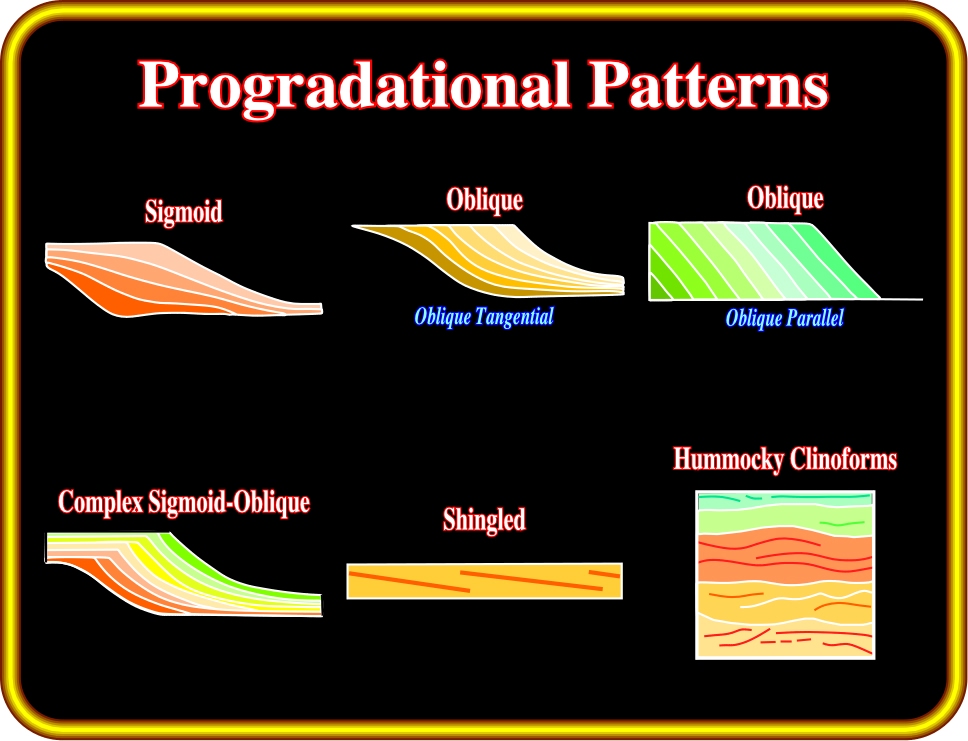
Plate 236- Prograding patterns are interpreted as strata that was deposited due to lateral outbuilding or prograding of gently sloping depositional surfaces, called clinoforms.
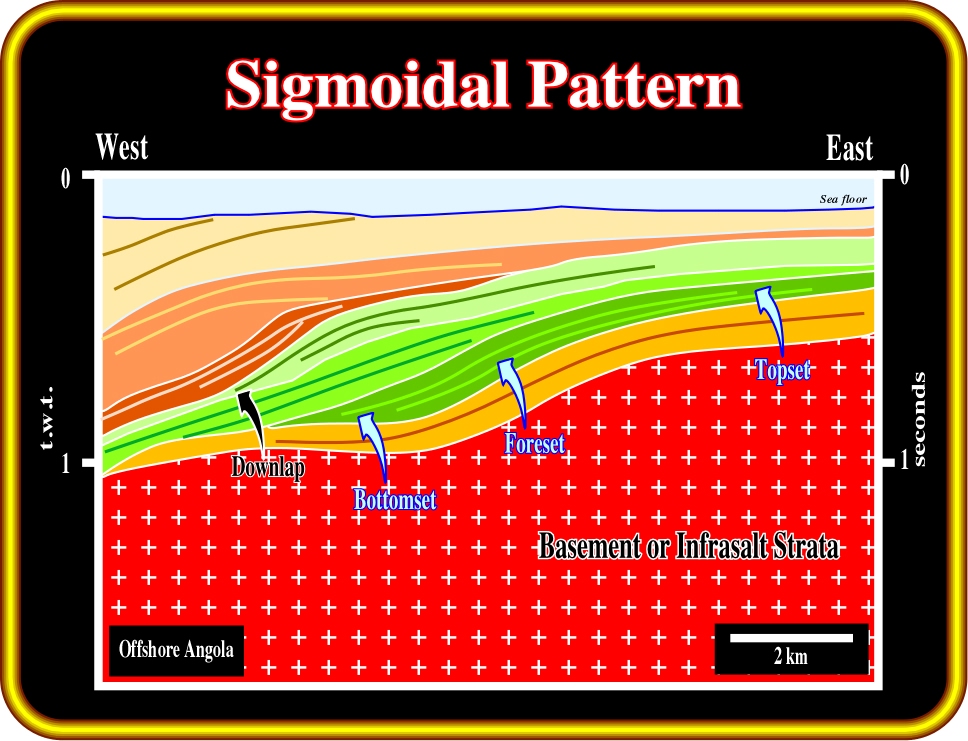
Plate 237 - As illustrated on this seismic line from the conventional offshore Angola, a sigmoid progradational configuration is a prograding clinoform pattern formed by a superposed sigmoid (S-shaped) reflection interpreted as strata with thin, gently, dipping upper and lower segments, and thicker, more steeply dipping middle segment. The upper (topset) segments of the strata have horizontal or very low angles of dip and are concordant with the upper surface of the facies unit. The thicker middle (foreset) segments form lenses superposed to allow successively younger lenses to be displaced laterally in a depositional downdip direction, forming overall outbuilding or progradatinal patterns.
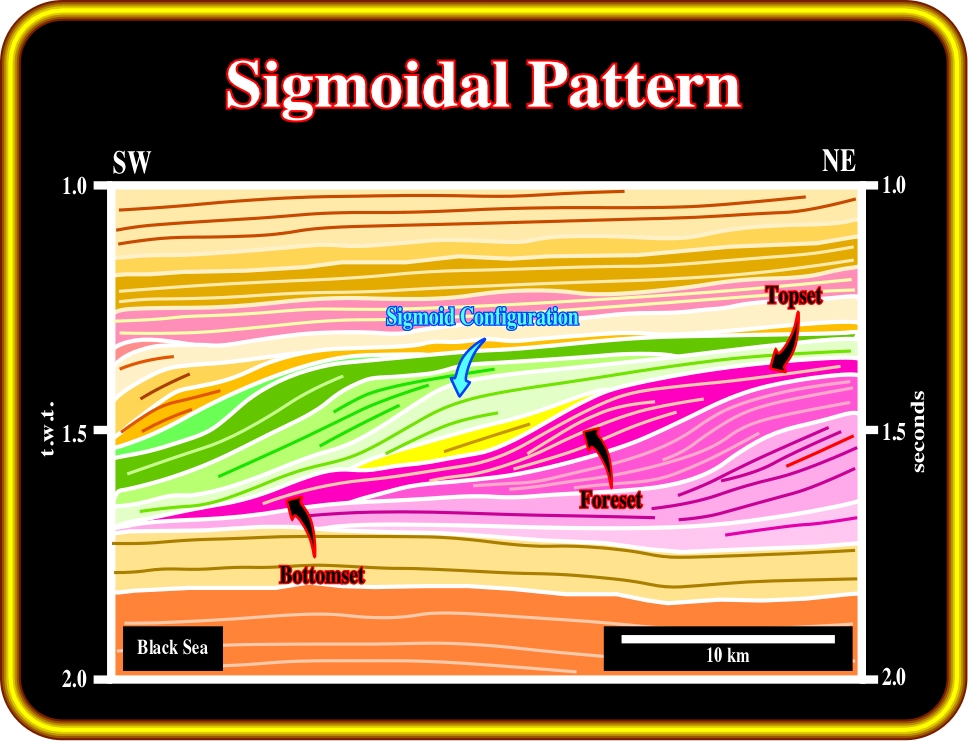
Plate 238 - As pictured on this line, in a sigmoid progradational configuration, depositional angles are quite low (usually less than 1°). The lower (bottomset) segments of the strata approach the lower surface of the facies unit at very low angles, and the seismic reflections show real or apparent downlap terminations as the strata terminates or become too thin to be recognized on seismic lines. This configuration implies relatively low sediment supply, and /or rapid rise in sea level to allow deposition and preservation of the topset units. A relatively low-energy sedimentary regime is interpreted. Indeed, very often bottomset segments match with potential source-rocks.
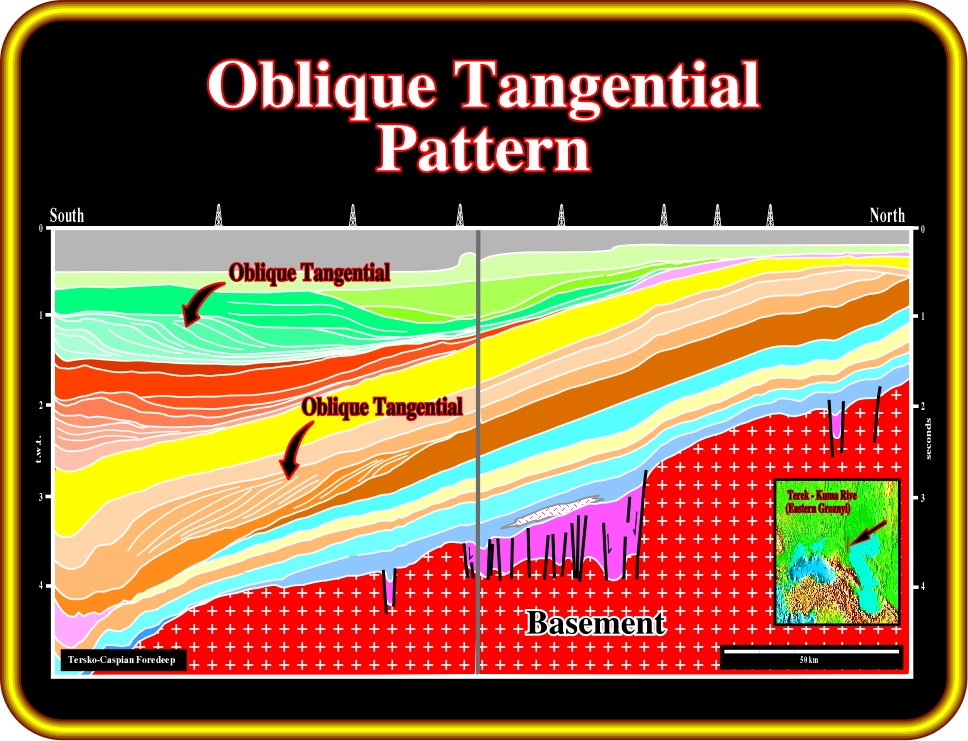
Plate 239 - On this line from North Caucase Trough mainly oblique tangential progradation reflections are illustrated , which can be interpreted as a progradating clinoform pattern consisting ideally of a number of relatively steep-dipping strata terminating updip by toplap at or near a nearly flat upper surface of the stratigraphic unit. Successively younger foreset segments of strata build almost entirely laterally in a depositional downdip direction. They may pass laterally into thinner bottomset segments, or terminate abruptly at the lower surface at a relatively high angle. They build out from a relatively constant upper surface characterized by lack of topset strata and by pronounced toplap terminations of foreset strata. Depositional dips are characteristically higher than in the sigmoid configuration and may approach 10°.
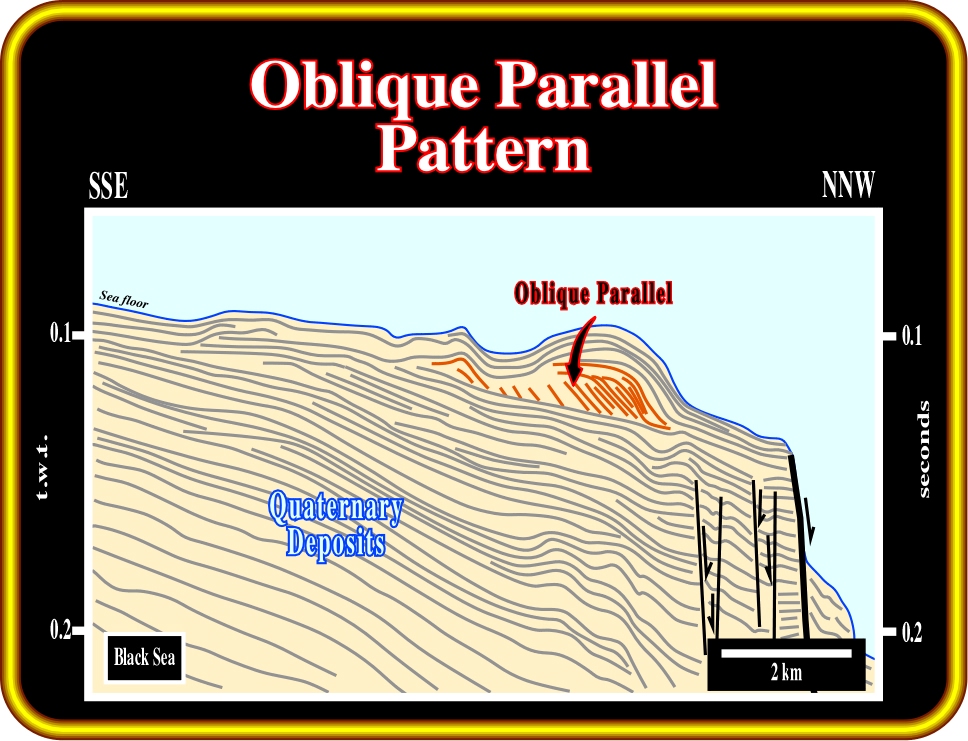
Plate 240 - In an oblique parallel progradational pattern, as illustrated above, the relatively steep-dipping parallel foreset strata terminate downdip at a high angle downlap against the lower surface. In sections parallel with depositional strike, reflections in these seismic intervals may range from parallel to low-angle oblique or sigmoid progradational, possibly with small channel-fill configuration. Oblique progradational configuration implies depositional conditions with some combination of relatively high sediment supply, slow to no basin subsidence, and a stillstand of sea level to allow rapid basin infill and sedimentary bypass or scour of the upper depositional surface. A relatively high-energy sedimentary regime is indicated.
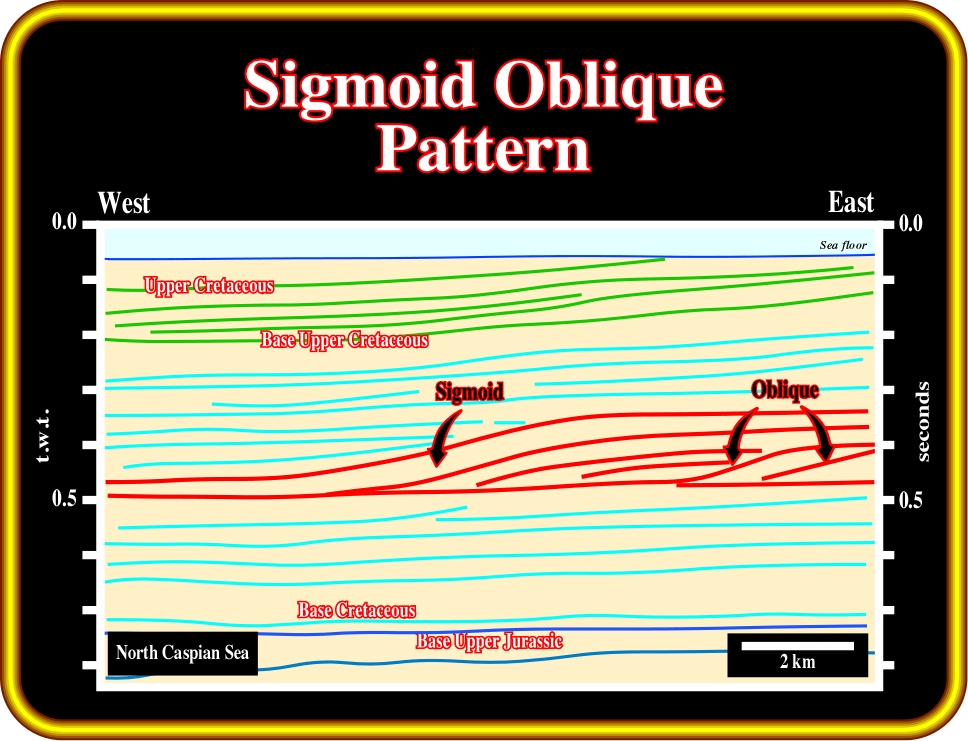
Plate 241 - Complex sigmoid-oblique progradational patterns are prograding clinoforms patterns of a combination of variably alternating sigmoid and oblique progradational reflection configurations within a single seismic interval. The upper segments (topsets) are characterized by complex alternations of horizontal sigmoid topset reflections and segments of oblique configuration with toplap terminations. This variability implies strata with a history of alternating upbuilding and depositional bypass in the topset segment, within a high-energy depositional regime. This reflection configuration illustrates short segments of toplap within a seismic sequence rather than at its upper boundary. The short segments of toplap indicate a number of smaller scale depositional intervals whose boundaries are below seismic resolution except where toplap is prominent. The smaller scale units are commonly interpreted as discrete lobes of a prograding unit.
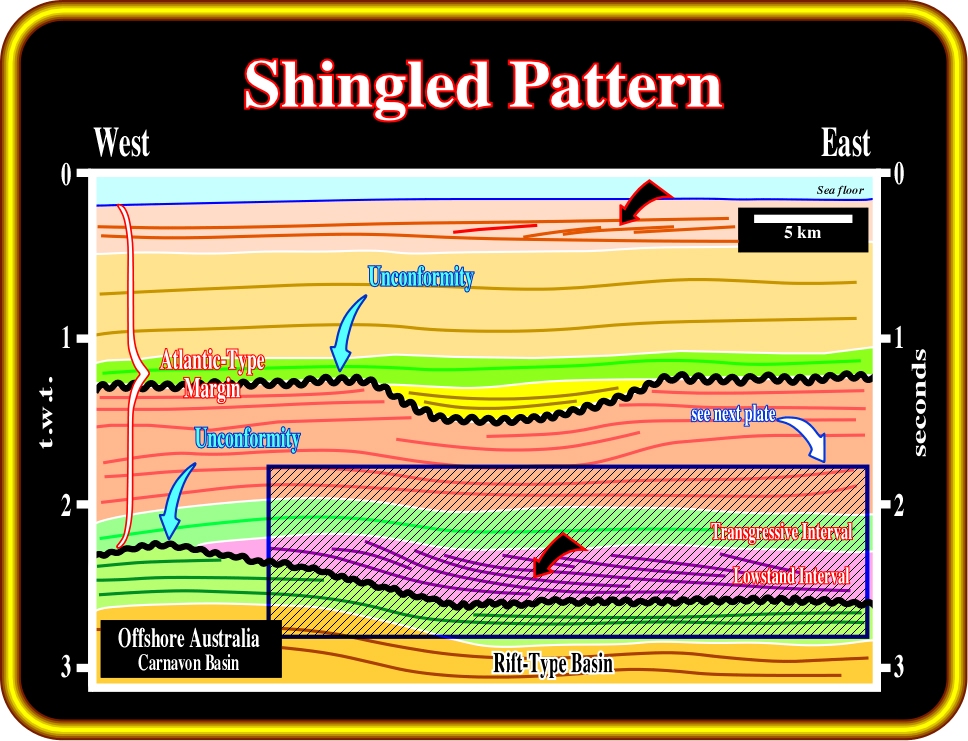
Plate 242- A shingled progradational reflection configuration is a thin prograding seismic pattern, commonly with parallel upper and lower boundaries, and with gently dipping parallel oblique internal reflectors that terminate by apparent toplap and downlap. As illustrated on this seismic line, from Carnavon basin (offshore West Australia), successive oblique internal reflectors within the lowstand seismic interval (purple) show little overlap with each other. The overall pattern resembles that of the parallel oblique progradational configuration, except that the thickness of the interval is just at the point of seismic resolution of the oblique beds. See the facies interpretation of the lowstand interval, where shingled progradational reflections are present, on the next figure.

Plate 243 - Shingled seismic configurations are most common in seismic intervals interpreted as shallow water or deep water prograding depositional systems. This line, which is a detail of the seismic line illustrated on Plate 242, illustrates the shingled progradational reflection pattern associated with proximal turbidites. This interval was drilled. Sandstone turbidite lobes, with shingled progradational patterns were found. On electric logs such turbidite reservoirs have a characteristic cylindrical signature, i.e, the upper and lower limits are quite sharp. A stacking of several shingled turbidite lobes is often found in a single well.
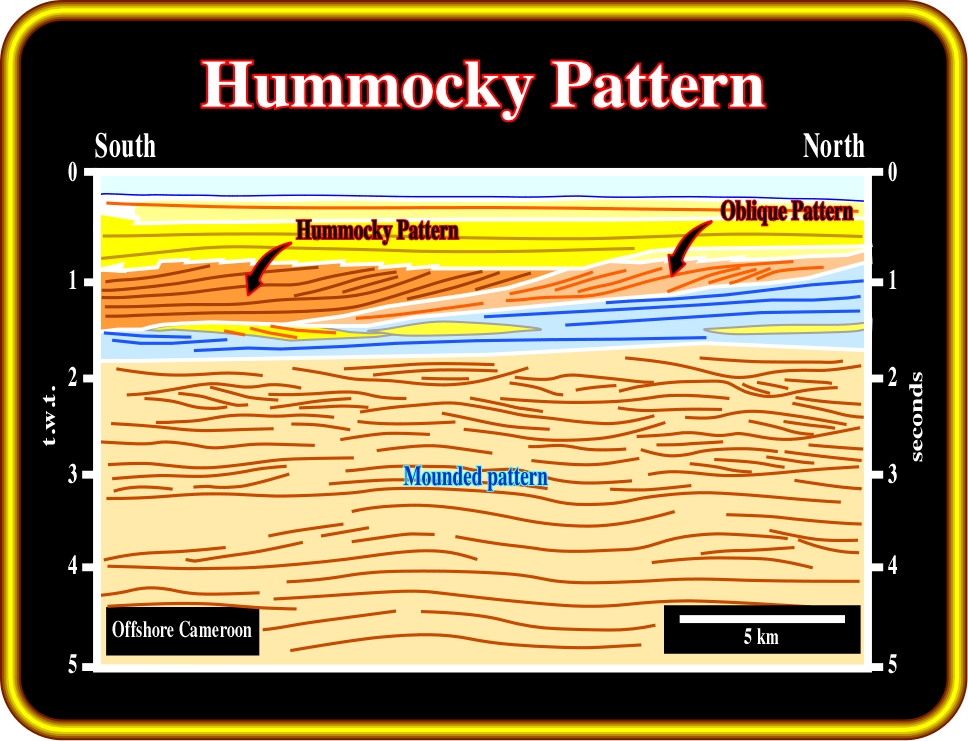
Plate 244 - A hummocky clinoform reflection configuration consists of irregular discontinuous subparallel reflection segments forming a practically random hummocky pattern marked by nonsystematic reflection terminations and splits. Relief on hummocks are low as the limits of seismic resolution are approached. As illustrated above, this pattern commonly grades laterally into larger, better defined clinoform patterns, and upward into parallel reflections. Reflection pattern is generally interpreted as strata forming small, interfering clinoform lobes building into relatively shallow water in a prodelta or interdeltaic position.